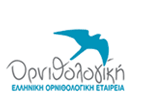21th Annual Symposium on Sea Turtle Biology and Conservation), Φιλαδέλφεια, ΗΠΑ, 24-28 Φεβρουαρίου 2001
The beaches in Lakonikos bay, southern Peloponnese, with extensive sand dune systems comprise a major nesting area for Caretta Caretta in Greece. Sand dunes are also a protected habitat under the European Union's Habitats Directive (92/43/EEC, Annex I). In addition they play a role in maintaining the beaches and protect the coastal zone from saltwater intrusion and sea wind. Due to the construction of a road through the sand dune zone access by means of vehicles has increased drastically. This has caused several erosion points in the dune ridge frequented by the public accessing the beach. To meet this threat ARCHELON, under the European Commission's LIFE-Nature funding instrument, launched in close co-operation with local authorities a pilot project, the first in Greece, to raise awareness and develop methods for sand dune restoration and visitor access control.
Here we present our action and data of sand accumulation along sand trapping fences over the period of February 1999-September 2000. Three different locations were monitored, one blowout and two wash-overs. The data show a significant accumulation of sand during the windy season and in some places dune profile has been almost completely restored. Planting of local dune plants helped further restoring the natural functioning of the dune system.
Poster text
The coastline of the Evrotas Delta and the nearby beaches comprise a significant nesting rookery in Greece for the Loggerhead sea turtle (Caretta caretta), hosting an average of 200 nests annually. The sand dune system that once extended between the beach and the low-lying wetlands are now greatly reduced in area due to agricultural conversion, and degraded by numerous damaging activities. Main problems are sand extraction, vehicle use on the dunes and illegal use of public land. Channelisation of the Evrotas River has also led to severe coastal erosion.
The Study Site
Lakonikos Bay is located in the southern part of the Peloponnese, Greece. The nesting beaches in the area have been monitored by ARCHELON since 1985. Sand dunes exist behind most of the 15 km of the Evrotas nesting beach.
The River of Evrotas reaches the sea in the middle of the beach and the whole Evrotas Delta has been proposed for the Natura 2000 network due to its significant habitats and species. The actions presented take place on three different locations within the Evrotas Delta.
The Project
After a period of experimental sand dune restoration, the action was developed further according to a management plan for the area prepared by ARCHELON and the Hellenic Ornithological Society under the LIFE-Nature project. Three different locations were monitored, one blowout and two wash-overs.
Sand trapping fences were constructed from a double layer of degradable plastic netting by volunteers on site. Monitoring over a period, February 1999 until September 2000, showed significant accumulation of sand during the windy season with an almost completely restored sand dune profile in certain places. Planting of local dune plants helped further restoring the natural functioning of the dune system. Further wooden pathways were constructed from local sawmill off cuts to reduce erosion from visitors and facilitate their movement through the dune system in certain places.
For the effective protection of sea turtle nesting beaches of Lakonikos Bay, ARCHELON is focusing its attention on the protection and restoration of the coastal zone. In close collaboration with the local community and for the first time in Greece a successful sand dune restoration action was implemented.
Parallel to this work and in collaboration with the local Municipalities of Skala and Elos the construction of the Environmental Scientific Center of Evrotas was accomplished. Further projects in the area include an expansion of the sand dune restoration action and construction of a Nature Trail in the sand dunes of Evrotas to raise the awareness of the local population and visitors.
The proven results of scientific work in addition to public awareness activities focusing mainly on children, will provide a foundation for the acceptance of a future protected area and local participation in the management of the Evrotas Delta.
Diagram:

The best results of sand accumulation were observed in the beginning of the spring and by fences with an orientation perpendicular to South-South West, the direction of the prevailing wind of the season. Maximum sand accumulations for the different actions were: Kyani Akti 40cm; Pouga-1 40cm; Pouga-2 30cm.
Picture no1 With the collaboration of the local communities and the help of volunteers 30 fences were placed at a total length of 165,5m and an average of one measuring point per meter.
Picture no2 Pougka 1-2: Wash over areas caused by the leveling of the sand dunes. High waves destroyed some fences during the action but also brought new natural sand trapping material.
Picture no3 Kyani Akti: A blowout area caused by vehicles accessing the beach. This was the first pilot sand dune restoration area.
Picture no4 Τhe mouth of the Evrotas River: Channelisation of the Evrotas river has led to severe coastal erosion.


